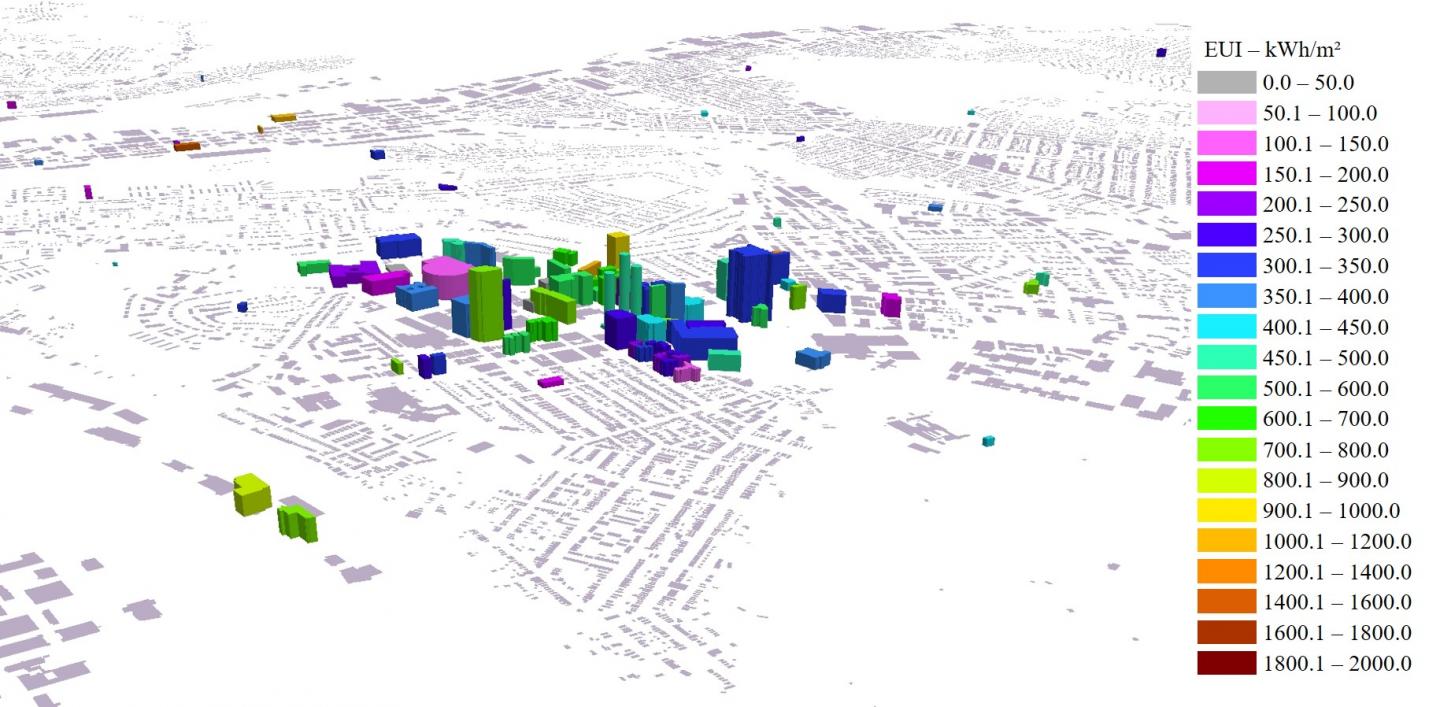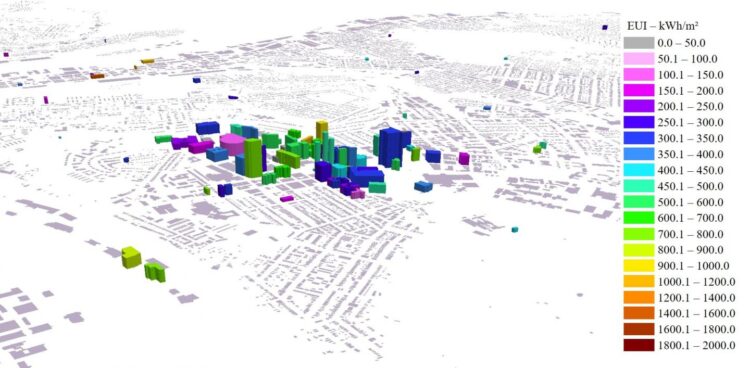Pitt civil engineers use Pittsburgh to create energy usage model in commercial buildings

Credit: Bilec Built Environment and Sustainable Engineering Group
The building sector in the U.S. accounts for 39 percent of energy use, with commercial buildings responsible for about half of that. As cities grapple with climate change, making commercial buildings more efficient is a key part of the solution.
Researchers at the University of Pittsburgh Swanson School of Engineering and the Mascaro Center for Sustainable Innovation used the City of Pittsburgh to create a model built upon the design, materials and purpose of commercial buildings to estimate their energy usage and emissions. While other models may be hindered by a scarcity of data in public records, the researchers’ Urban Building Energy Model (UBEM) uses street-level images to categorize and estimate commercial buildings’ energy use. Their findings were recently published in the journal Energy & Buildings.
“We found that in the existing literature, the scale of commercial buildings was always one of the challenges. It’s cumbersome or even impossible to find and process detailed information about hundreds or thousands of buildings in an urban environment,” said Rezvan Mohammadiziazi, lead author and graduate student in the Swanson School’s Department of Civil and Environmental Engineering. “Researchers need to rely on assumptions based on when buildings were built or what the mechanical and electrical systems look like. Our hope is that by using image processing, we can build a framework that reduces some assumptions.”
The researchers used publicly available Geographic Information System (GIS) data and street-level images to develop their UBEM, then created 20 archetypes of buildings that comprised eight commercial use types.The buildings were sorted into the groups based on categories including use type and construction period.
With street-level images to determine the building material, window-to-wall ratio, and number of floors, and LiDAR data from the U.S. Geological Survey to determine building height, the researchers were able to simulate and map the annual energy use intensity of 209 structures in Pittsburgh. When they validated their findings using other publicly available data, they had just a 7 percent error rate. Though it’s currently mostly guided by the researchers looking at the images, the researchers hope that this modeling framework can eventually take advantage of machine learning to more quickly analyze and categorize building images.
The focus on commercial buildings, as well, was an important addition to the field of research.
“A lot of good work has already been done in this field, but there are fewer studies focusing on commercial buildings, because data about them is more difficult to capture than residential buildings. They’re bigger and have more diverse uses,” explained Mohammadiziazi. “We wanted to determine if an urban model for commercial buildings could be accurate based on acceptable errors, and it was.”
While one goal was to create a framework that other researchers could replicate and build upon, another was to help the City of Pittsburgh meet its ambitious energy goals. Pittsburgh has joined 22 other U.S. cities as a 2030 District, pledging to reduce energy use, water consumption and transportation emissions by 50 percent by the year 2030. By creating a tool to estimate current usage, the research can aid policy makers in setting energy goals and efficiency regulations. The University of Pittsburgh is a member of the 2030 District, and hasalso pledged to be carbon neutral by 2037 to mark Pitt’s 250th anniversary. Pitt Assistant Professor Melissa Bilec has been involved in the Pittsburgh 2030 District since its inception.
“We are fortunate–and have worked diligently–to have a strong partnership with the City of Pittsburgh, along with our own University of Pittsburgh’s Facilities Management. The Mascaro Center for Sustainable Innovation values and fosters our internal and external partners,” said Bilec, who is also Roberta A. Luxbacher Faculty Fellow in the department of civil and environmental engineering, and deputy director of the Mascaro Center for Sustainable Innovation. “We will not meet or exceed our climate and energy goals without aggressive action and solid planning in the building sector. Models, such as the one we created, are intended to aid in the planning process to meet our goals.”
###
Joining Bilec and Mohammadiziazi as coauthor is civil engineering undergraduate Samuel Copeland, who began working with Bilec as a high school student through the Pitt EXCEL program. The paper, “Urban building energy model: Database development, validation, and application for commercial building stock” (doi.org/10.1016/j.enbuild.2021.111175) will also be printed in the October 2021 edition, published by Elsevier.
Acknowledgement
This work was supported by the National Science Foundation [Grant No. 1934824]. Any opinions, findings, and conclusions or recommendations expressed in this article are those of the authors and do not necessarily reflect the views of the National Science Foundation.
Media Contact
Maggie Pavlick
[email protected]
Original Source
https:/
Related Journal Article
http://dx.





